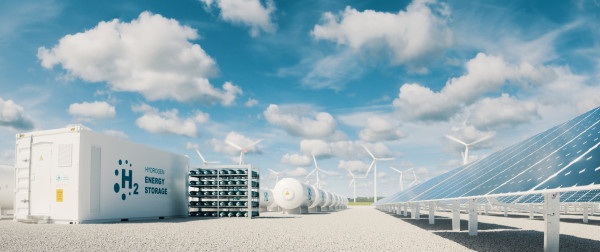The global market for platinum group metals (PGMs) – which include platinum, palladium, rhodium, iridium, osmium and ruthenium – will record a 4.47% increase between now and 2029, according to market research firm Mordor Intelligence. In part, market growth will come from growing demand for PGMs in green technologies, including hydrogen energy technologies, in turn generating opportunities across Africa’s mining and hydrogen value chains.
The Critical Minerals Africa (CMA) Summit, taking place on November 6-7 in Cape Town, will unpack the nexus between PGMs and green hydrogen and their evolving role within the African and global energy transition. The continent is home to the world’s largest PGM reserves, with South Africa alone possessing over 80% of global resources and Zimbabwe also holding substantial reserves. These metals play a vital role in fuel cell technology, enabling the production of electricity from hydrogen and oxygen. As African countries – including Namibia, South Africa, Mauritania and Egypt – intensify their green hydrogen activities, long-term PGM demand is expected to grow substantially, powering a wide range of applications from hydrogen fuel cell vehicles to stationary power generation to industrial processes.
Africa’s Green Hydrogen Potential
The African continent holds substantial potential for green hydrogen production given its abundance of co-located renewable resources. According to the European Investment Bank, Africa has the potential to produce 50 million tons of green hydrogen per annum by 2035, which could help meet power, transportation and industrial energy needs, decarbonize heavy-polluting industries, as well as be used for global export.
Namibia represents a pioneer of green hydrogen on the continent, having secured billions in investment for green hydrogen projects from various investors, including the USAID, the Development Bank of Southern Africa and Japanese investment firm ITOCHU. Green energy firm Hyphen Hydrogen Energy is implementing a $10-billion project, with the capacity to produce 350,000 metric tons per year using 7 GW of renewable energy and 3 GW of hydrogen electrolyzers. Last May, Belgian port operator Antwerp Bruges partnered with the Namibian Ports Authority to develop a EUR 250-million hydrogen and ammonia storage facility at Walvis Bay Port to facilitate the transport of hydrogen to regional and global markets.
Realizing the potential of green hydrogen to drive regional energy security, South African tourism, trade and investment agency Wesgro signed an agreement last month with the Northern Cape Economic Development, Trade and Investment Promotion Agency, Namibia’s Environmental Investment Fund and infrastructure company Gasunie and Climate Fund Managers. The agreement paves the way for the parties to assess the feasibility of developing a green hydrogen corridor connecting the Western Cape and Northern Cape provinces of South Africa with Lüderitz in Namibia.
Furthermore, green energy companies Hive Energy UK and Genesis Eco-Energy are developing a R105 billion green hydrogen and ammonia project in the Coega Special Economic Zone in the Eastern Cape province of South Africa. The project will add 14,400 MW of electricity to the grid and produce 900,000 tons of green ammonia for export to global markets, increasing the country’s export revenue. South Africa has also established a $1-billion fund in partnership with the Netherlands, aimed at accelerating the deployment of green hydrogen projects to feed growing demand in Europe.
Private and public sector entities in South Africa are demonstrating the potential for synergy between PGMs and green hydrogen, specifically in hydrogen fuel cell vehicles. Last October, mining firm Anglo American entered into a partnership with automotive firm BMW South Africa and international energy firm Sasol to develop South Africa’s PGMs and green hydrogen value chains. Anglo American will provide PGMs used in hydrogen fuel-cell vehicles, while Sasol will provide the green hydrogen and BMW the vehicles.
As global demand for green hydrogen rises due to carbon emission reduction policies and growing energy needs, a parallel surge in PGMs demand is also anticipated. Given that Africa is home to the overwhelming majority of these critical minerals, CMA 2024 will explore the latest policies, projects and developments ensuring that the continent capitalizes on green hydrogen as a key growth driver.
Organized by Energy Capital&Power, CMA is the largest gathering of critical mineral stakeholders in Africa. Taking place from November 6 – 7 in Cape Town, the event positions Africa as the primary investment destination for critical minerals. This year’s edition takes place under the theme Innovate, Enact, Invest in African Critical Minerals to Sustain Global Growth, connecting African mining projects and regulators with global investors and stakeholders to untap the full potential of the continent’s raw materials. Sponsors, exhibitors and delegates can learn more by contacting sales@energycapitalpower.com.
Distributed by APO Group on behalf of Energy Capital&Power.

